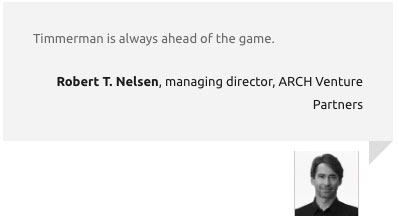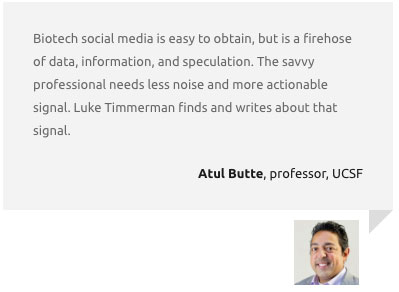Sterile Information: Early Forecasting Not The Answer To R&D Productivity Woes

David Shaywitz
Two recent Wall Street Journal deep-dives nicely bookend a critical, and unresolved, tension faced by large pharmaceutical companies: how can their R&D organizations discover, develop, and deliver the new medicines patients await, and the growth and return on investment that shareholders demand?
Early this year, I discussed an April 2023 profile of Lilly by journalist Peter Loftus, who described how the company, led by a physician-scientist named Daniel Skovronsky, revitalized Lilly’s R&D, after a decade of documented struggles.
Skovronsky’s pivotal insight, as I wrote, was “recognizing that key decisions were being driven by commercial needs, rather than the best science. Marginal products were advanced (only to later fail) because they targeted a specific commercial need.”
Poor decision making driven by non-scientific considerations – particularly commercial desiderata—is a frequently-encountered challenge in drug development, as VC David Grainger, in particular, has highlighted (see here).
But other large pharma companies (I suspect many if not most large pharma companies) are concerned that they’ve provided excessive latitude to their R&D organizations, rather than insisting on a greater commercial focus.
Wishful Thinking
For instance, last week, Journal reporter Jared Hopkins described how Novartis’s CEO had decided the company’s early efforts were excessively driven by science, and needed a greater emphasis on commercial prospects. Consequently, future sales will now be forecast for products before they enter clinical trials, Hopkins wrote.
Associated with this change in emphasis, the early research arm of Novartis, the Novartis Institutes for BioMedical Research (NIBR), “will soon simply be known as Novartis Biomedical Research,” according to STAT.
The new Novartis mindset contrasts, directly, with the approach instituted by former NIBR head Mark Fishman, who deliberately excluded such forecasts from early-stage decision-making (as I discussed a decade ago in Forbes). A decade later, Novartis brass clearly became concerned that NIBR had become “too academic” – pursuing interesting questions without sufficient regard for commercial applications.
While appealing in theory, Novartis’s proposed remedy – essentially, use early commercial forecasting to “pick winners” – makes sense only if you have the actual ability to do this. Otherwise, you have just an exercise in false, if comforting, precision.
A classic study by BCG found that there was essentially no correlation between predicted peak sales for a drug at the time it was approved (i.e. with complete phase 3 data) and actual peak sales. Several years later, as I discussed in Forbes, McKinsey confirmed the fragility of sales forecasts. Consequently, the notion that one can predict sales before human studies in any meaningful way is purely wishful thinking – the sort of “sterile information” (to use Nassim Taleb’s term) that corporate planners typically love, but which is functionally worthless.
As Taleb testified before the Financial Services subcommittee of the U.S. House of Representatives in 2014,
“Some may use the argument about predicting risks equal or better than nothing; using arguments like ‘we are aware of the limits.’ Risk measurement and prediction —any prediction — has side effects of increasing risk-taking, even by those who know that they are not reliable. We have ample evidence of so called ‘anchoring’ in the calibration of decisions. Information, even when it is known to be sterile, increases overconfidence.”
Good Translational Models
How to pick projects, then?
One view – as analyst Jack Scannell has argued, as I discussed here — is to prioritize areas with good translational models, as slightly better models contribute more impactfully to the odds of success than increasing by several orders of magnitude the number of molecules screened (which is the canonical large pharma approach). In fact, Scannell describes this excessive reliance on scale vs smarts as the “mis-industrialization” of science, and this description seems spot on. (Taleb and I made a similar point in a 2008 commentary in the Financial Times, here.)
Focusing on areas with good translational models is explicitly the approach Vertex is taking, and arguably Regeneron as well. Both Vertex and Regeneron are compelling (and remarkably rare) examples of established drug discovery companies that are still dominated by their powerful R&D cultures; more commonly, the business of running a drug development company is considered too complex to be left to the scientists (in the same way that running a hospital is increasingly considered too complex to be left in the hands of doctors, rather than corporate managers). It’s also true that Vertex and Regeneron are both comparatively small; Regeneron, the larger of the two, employs about only about a tenth the number of people that Novartis does, for example.
Without question, there are many areas of biopharma that arguably benefit from the rigor of traditional corporate industrialization – in particular, the focus on consistent, repeatable processes that operate on a global scale. Manufacturing, engagement with regulators, sales and marketing, even late phase clinical trials largely fall into this category, and tend to be areas that big pharmas do particularly well, and with which corporate executives are fairly comfortable.
Process-driven Mindset vs. Novel Discovery
But coming up with new products? Not so much.
While pharma companies aspire to develop new products with a range of defined characteristics – the so-called “target product profile” – you generally can’t discover on command.
Moreover, many commercially successful products were developed without any initial interest or support from commercial teams. Merck (see here) was days away from out-licensing pembrolizumab (Keytruda), a drug that had been kept alive by researchers despite the best efforts of successive management to stop the program. Similarly, when Millenium acquired Leukosite, they had no idea that the transaction included a molecule, bortezomib, that would become the most important commercial product in their portfolio.
Big pharmas are built around establishing repeatable processes…but there simply isn’t a playbook for serial creative success.”
Big pharma brings considerable resources to discovery, as well as an extremely high degree of rigor, and often an exceptional amount of implicit knowledge, particular in areas like medicinal chemistry. But large pharma (as Safi Bahcall has nicely described – see here and here) also tend to be exceptionally bureaucratic and process-driven, and I’m not optimistic you can process and administrate your way to creativity and insight. I’d argue the process-driven mindset that serve other aspects of drug development and delivery so effectively (enabling the distribution of safe and effective medicines to patients around the world) have, on balance, an adverse impact on novel discovery. Moreover, for all the efforts of big pharma to enable research groups that are more “biotech-like,” the incentives and cultures of most large corporations just doesn’t seem to allow for this, in practice.
This isn’t an argument for aimless discovery research. Rather, it seems inevitable that an ever-greater number of future first-in-class medicines will come from the focused and high-performing teams in the start-up world. Big pharmas are built around establishing repeatable processes, and driving incremental refinements. But original discovery – to the dismay of most large pharma – often isn’t about turning the crank faster.
Rather, originality in drug discovery, as in other areas, requires, in addition to an intended destination, a high degree of agility, freedom, and imagination; the capacity to embrace and live with uncertainty, rather than obscure it with sterile forecasts; and the humility and ambition to imagine a future different from and beyond what we might anticipate, and extrapolate to, today. Perhaps most difficult for large, process-driven corporations, it requires a recognition that there simply isn’t a playbook for serial creative success. These are principles that exceptional leaders like Ed Catmull, the CEO of Pixar in its heyday, have intuited, and that most large corporate cultures struggle to sustain.
Recent Astounding HealthTech columns on Pharma R&D





